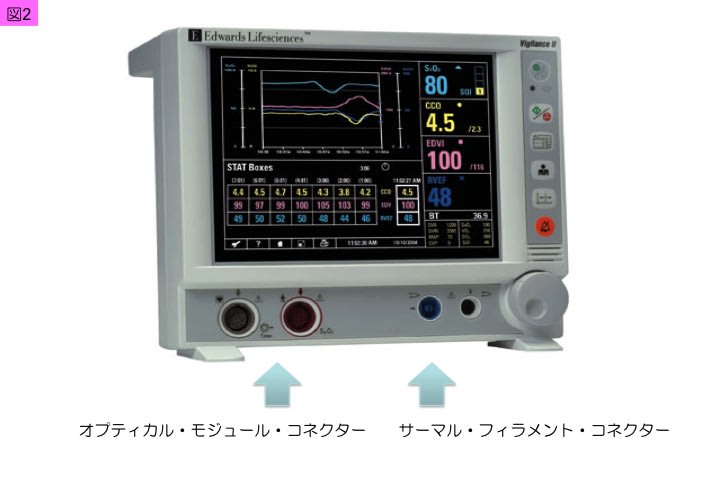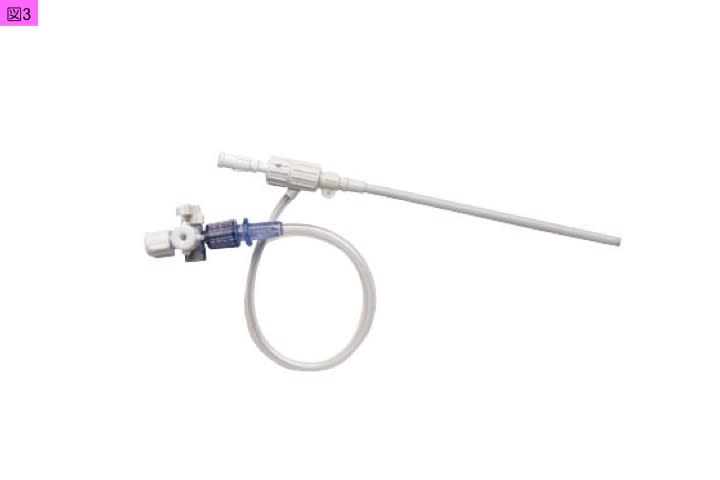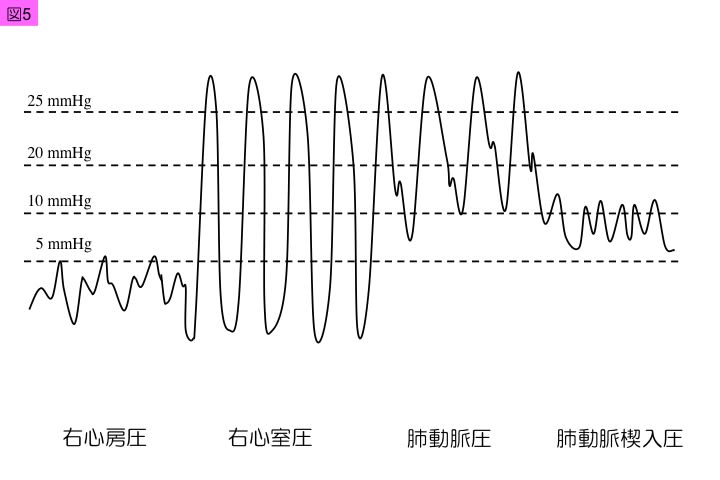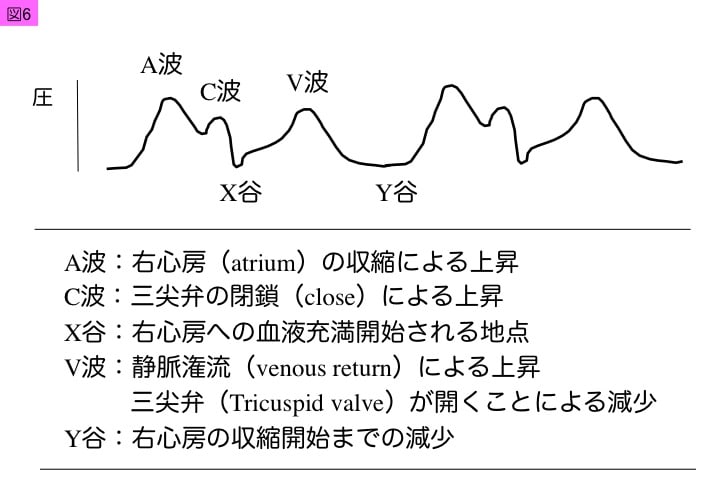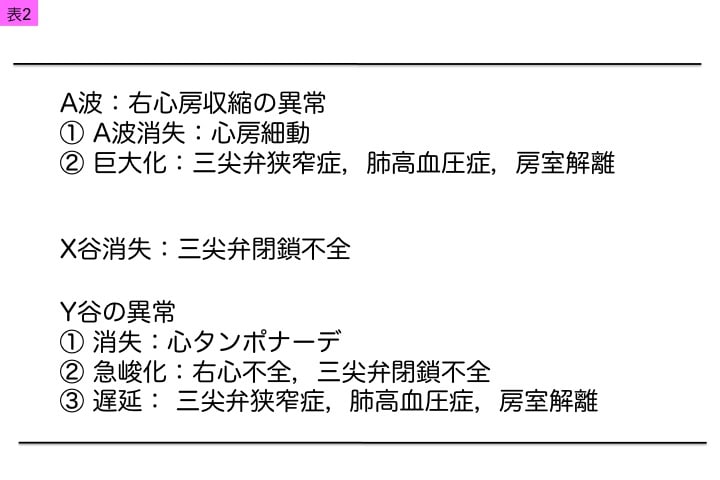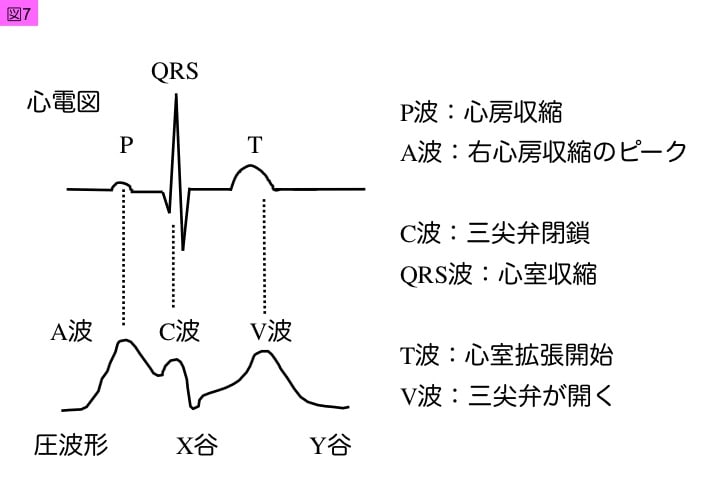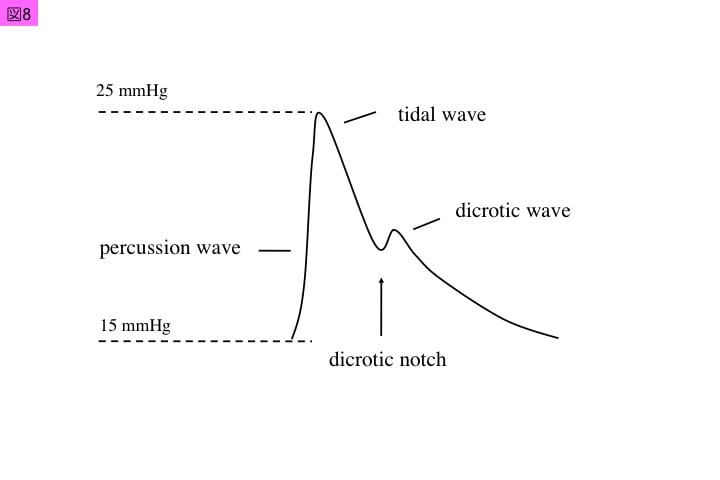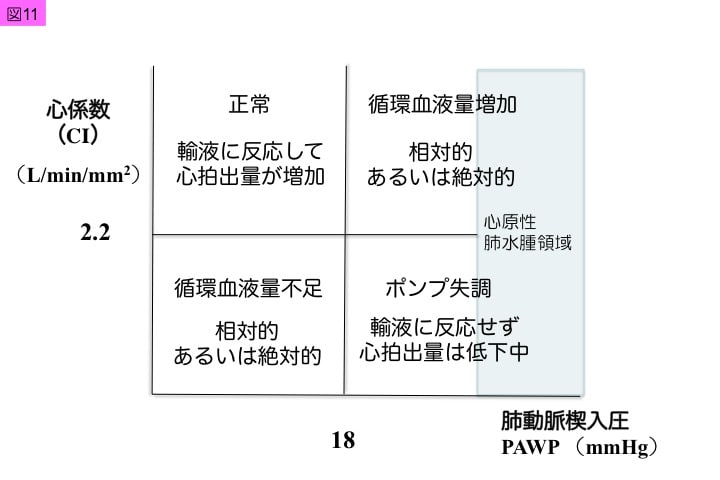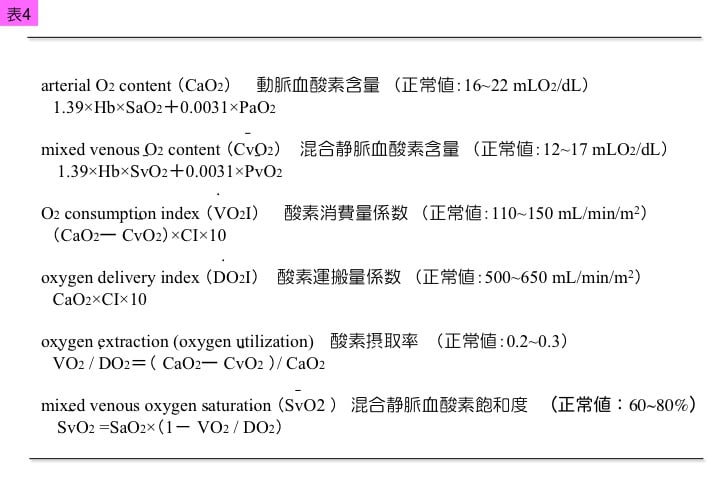集中治療
ショック管理のポイント2010
名古屋大学大学院医学系研究科
救急・集中治療医学分野
教授 松田直之
続き
【ショックにおけるステロイドの適応】
これまで,ショックにおけるメチルプレドニゾロン大量療法(1日量30 mg/kgレベル)に対するいくつもの多施設前向き研究が報告され,特に敗血症性ショックでは大量ステロイド療法が否定されている59, 60)。基礎研究においても,メチルプレドニゾロン大量療法により,1日以内にその受容体であるグルココルチコイド受容体αの減少が,さまざまな主要臓器細胞や免疫担当細胞で確認できる。しかし,ICU管理が遷延した場合や薬物の影響により副腎機能低下が進行し,ショック形成に関与する場合があることには,留意が必要である61, 62)。
外傷や全身性炎症の急性期管理に用いられる薬物の中には,副腎機能を低下させる可能性のある薬物がある。ベンゾジアゼピン系鎮静薬63)やオピオイド64)はACTHの放出を抑制し,副腎皮質からのコルチゾル分泌を抑制する可能性がある。術後鎮静に用いられているアドレナリンα2作動薬デクスメデトミジン65)は,副腎皮質束状帯におけるコルチゾル産生を抑制する作用を持ち,通常,周術期には1日までの期限で用いられるのが原則である。また,抗真菌薬であるケトコナゾール66)やフルコナゾール67),さらには,シクロスポリン68),フェニトイン69)などはコーチゾル代謝酵素6βヒドロキシラーゼを活性化させる作用があり,コーチゾル分解を促進させる。また,コーチゾル担体であるコルチコステロイド結合グロブリンは好中球エラスターゼの基質であり,好中球エラスターゼによりコルチコステロイド結合グロブリンが切断されるため,フリー体のコーチゾルの遊離が高まる70)。このため,局所炎症では好中球の浸潤によりコーチゾルレベルが高まり,細胞保護が合理的に行われているが,侵襲的手術や敗血症のように好中球エラスターゼレベルが血中で上昇する病態では,炎症部位へのコーチゾル運搬が障害される。敗血症性ショックや多発外傷ではアルブミンのみならずコルチコステロイド結合グロブリンが低下し71),コーチゾルの血漿消失半減期が短縮することも知られている72)。
このようなざまざまな理由から,敗血症患者の約67-80%にACTH分泌の低下した2次性副腎機能低下症が合併し,さらに,約60%に副腎機能不全が存在すると考えられている73)。ACTH負荷試験によりコルチゾルの上昇が9 μg/dL以下であるショック患者では,ノルエピネフリンに対する昇圧効果が低下している可能性も示唆されている74)。2004年のSurviving Sepsis Campaign guidelines8)においてすら,1日量300 mgを超えるヒドロコルチゾンの投与は行うべきでないと提言され,輸液やカテコラミンで昇圧できない敗血症性ショックに対してはヒドロコルチゾン200-300 mg/日を3-4分割あるいは持続投与で7日間の投与が推奨されている。現在日本で使用されているヒドロコルチゾン(ハイドロコートンⓇ,サクシゾンⓇ,ソル・コ-テフⓇなど)の200 mgに相当する力価のステロイド量は,プレドニゾロン(プレドニンⓇなど)で50 mg,メチルプレドニゾロン(ソル・メドロールⓇなど)で40 mgであり,両者の血漿除去半減期は12-36時間とヒドロコルチゾンの8-12時間より長いことに留意して用いる必要がある。血流分布異常性ショックの誘因として,副腎機能不全を念頭に置く必要がある。
【お わ り に】
本稿は,ショック初期における循環管理の動向を,輸液管理を中心として,これまでの臨床研究を整理したものである。個別のガイドラインとしてまとめられてきた出血性ショック15, 16),心原性ショック10-12),アナフィラキシーショック13, 14),敗血症性ショック8, 9)は,個々の治療指針としての特徴を把握することが大切であるが,その救命の基盤には共通する視点が存在する。ショック治療の初期過程より,その予後を決定する因子が動き始めることにも注意しなければならない。鎮静と鎮痛,輸液療法,カテコラミンの病態に合わせた適正使用,重炭酸イオンの使用制限,急性肺障害の管理,腎保護対策,血糖値管理,ステロイドの適正使用,感染防御と感染症コントロール,肺血栓塞栓症対策,血管内皮細胞保護の戦略,播種性血管内凝固症候群の早期発見と治療などは,共通の治療基盤である。しかし,ガイドラインはまさにある一定の治療の方向性を示すものに過ぎず,患者は複合病態を呈する場合があることにも,十分に配慮しなければならない。敗血症性ショックを合併した髄膜炎,頭部外傷を伴う出血性ショック,これらの輸液にはおそらく脳圧モニタを必要とし,本稿で述べた簡略化した治療はそぐわない。ショックに対するこれまでの多くのデータを自身に取り込ませる一方で,独自に日本において再考し,独自のデータを持ち,独自のエビデンスとして世界に公表し,より大きなエビデンスの構築させる可能性を救急・集中治療医は持つ。
【文 献】
1)Fink MP: Shock: an overview. In Rippe JM, Irwin RS, Alpert JS, et al, eds: Intensive care medicine, ed 2, Boston, Mass, 1991, Little, Brown
2)Cerra FB: Shock. In Burke JF, ed: Surgical physiology, Philadelphia, 1983, WB Saunders
3)Blalock A: Shock: Futher studies with particular reference to the effects of hemorrhage, Arch Surg 1937; 29:837
4)Weil MH: Bacterial shock. In Weil MH, Shubin H eds: Diagnosis and treatment of shock, Baltimore, 1967, Williams & Wilkins
5)Hinshow LB, Cox BG: The fundamental mechanisms of shock, New York, 1972, Plenum Press
6)Matsuda N and Hattori Y: Systemic inflammatory response syndrome (SIRS): Molecular pathophysiology and gene therapy. J Pharmacol Sci 2006; 101: 189-98
7)松田直之:全身性炎症反応症候群とToll-like受容体シグナル -Alert Cell Strategy-. 循環制御 2004; 25:276-84
8)Dellinger RP, Carlet JM, Masur H, et al. Surviving Sepsis Campaign guidelines for management of severe sepsis and septic shock. Crit Care Med 2004; 32:858-73
9)Poulton B: Advances in the management of sepsis: the randomised controlled trials behind the Surviving Sepsis Campaign recommendations. Int J Antimicrob Agents 2006;27:97-101.
10)ACC/AHA guidelines for the management of patients with ST-elevation myocardial infarction: a report of the American College of Cardiology/American Heart Association Task Force on Practice Guidelines (Committee to Revise the 1999 Guidelines for the Management of Patients with Acute Myocardial Infarction).Circulation 2005;111:2013-4
11)Williams JF, Bristow MR, Fowler MB, et al: Guidelines for the evaluation and management of heart failure. Report of the American College of Cardiology/ American Heart Association Task Force on Practice Guidelines (Committee on Evaluation and Management of Heart Failure). Circulation 1995; 92:2764-84
12)Babaev A, Frederick PD, Pasta DJ, et al. Trends in management and outcomes of patients with acute myocardial infarction complicated by cardiogenic shock. JAMA 2005; 294:448-54
13)2005 American Heart Association Guidelines for Cardioplumonary Resuscitation and Emergency Cardiovascular Care. Part 10.6: Anaphylaxis. Circulation 112(suppl): 2005; IV143-5
14)斎藤厚,砂川慶介,中島光好など:抗菌薬投与に関連するアナフィラキシー対策のガイドライン. 日本化学療法雑誌 2003; 51:497-506
15)Martel MJ, MacKinnon KJ, Arsenault MY,et al: Hemorrhagic shock. J Obstet Gynaecol Can 2002; 24:504-20
16)Stainsby D, MacLennan S, Hamilton PJ: Management of massive blood loss: a template guideline. Br J Anaesth 2000; 85:487-91
17)Kumar A, Parrillo JE: Shock. In: Critical care medicine 2nd eds, Parrillo JE and Dellinger RP (eds), Mosby, St. Louis, 2001, p375
18)Lim N, Dubois MJ, De Backer D, et al: Do all nonsurvivors of cardiogenic shock die with a low cardiac index? Chest 2003;124:1885-91
19)Members of the American College of Chest Physicians/Society of Critical Care Medicine Consensus Conference Committee: Definitions for sepsis and organ failure and guidelines for the use of innovative therapies in sepsis. Crit Care Med 1992; 20: 864–74
20)Maeder M, Fehr T, Rickli H, et al: Sepsis-associated myocardial dysfunction: diagnostic and prognostic impact of cardiac troponins and natriuretic peptides. Chest 2006;129:1349-66
21)Matsuda N, Hattori Y, Akaishi Y, et al: Impairment of cardiac β-adrenoceptor cellular signaling by decreased expression of Gsα in Septic Rabbits. Anesthesiology 2000; 93:1465-73
22)Grandel U, Hopf M, Buerke M, et al: Mechanisms of cardiac depression caused by lipoteichoic acids from Staphylococcus aureus in isolated rat hearts. Circulation 2005;112:691-8
23)Rivers E, Nguyen B, Havstad S, et al: Early goal-directed therapy in the treatment of severe sepsis and septic shock. N Engl J Med 2001;345:1368-77
24)Otero RM, Nguyen HB, Huang DT, et al: Early goal-directed therapy in severe sepsis and septic shock revisited: concepts, controversies, and contemporary findings. Chest 2006;130:1579-95
25)Shoemaker WC, Appel PL, Kram HB, et al: Prospective trial of supranormal values of survivors as therapeutic goals in high-risk surgical patients. Chest 1988;94:1176-86
26)Boyd O, Grounds RM, Bennett ED: A randomized clinical trial of the effect of deliberate perioperative increase of oxygen delivery on mortality in high-risk surgical patients. JAMA 1993;270:2699-707
27)Hayes MA, Timmins AC, Yau EH, et al: Elevation of systemic oxygen delivery in the treatment of critically ill patients. N Engl J Med 1994;330:1717-22
28)Gattinoni L, Brazzi L, Pelosi P, et al: A trial of goal-oriented hemodynamic therapy in critically ill patients. SvO2 Collaborative Group. N Engl J Med 1995;333:1025-32
29)Hayes MA, Timmins AC, Yau EH, et al: Oxygen transport patterns in patients with sepsis syndrome or septic shock: influence of treatment and relationship to outcome. Crit Care Med 1997;25:926-36
30) Varpula M, Tallgren M, Saukkonen K, et al: Hemodynamic variables related to outcome in septic shock. Intensive Care Med 2005;31:1066-71
31) Polonen P, Ruokonen E, Hippelainen M, et al: A prospective, randomized study of goal oriented hemodynamic therapy in cardiac surgical patients. Anesth Analg 2000; 90:1052–59
32)Ziegler D, Wright J, Choban P, et al: A prospective trial of preoperative optimisation of cardiac function in patients undergoing elective peripheral vascular surgery. Surgery 1997;122:584–92
33)Rhodes A, Cusack RJ, Newman PJ, et al: A randomised, controlled trial of the pulmonary artery catheter in critically ill patients. Intensive Care Med 2002; 28:256-64
34)Sandham JD, Hull RD, Brant RF, et al: A randomized, controlled trial of the use of pulmonary-artery catheters in high-risk surgical patients. N Engl J Med 2003; 348:5-14
35)Richard C, Warszawski J, Anguel N,et al: Early use of the pulmonary artery catheter and outcomes in patients with shock and acute respiratory distress syndrome: a randomized controlled trial. JAMA 2003;290:2713-20
36)Harvey S, Harrison DA, Singer M, et al: Assessment of the clinical effectiveness of pulmonary artery catheters in management of patients in intensive care (PAC-Man): a randomised controlled trial. Lancet 2005; 366:472-7
37)Sakr Y, Vincent JL, Reinhart K, et al: Use of the pulmonary artery catheter is not associated with worse outcome in the ICU. Chest 2005;128:2722-31
38)Reinhart K, Kuhn HJ, Hartog C, et al. Continuous central venous and pulmonary artery oxygen saturation monitoring in the critically ill. Int Care Med 2004;30:1572–8
39)Ladakis C, Myrianthefs P, Karabinas A, et al. Central venous and mixed venous oxygen saturation in critically ill patients. Respiration 2001;68:279–85
40)Weiskopf RB, Viele MK, Feiner J, et al: Human cardiovascular and metabolic response to acute, severe isovolemic anemia. JAMA 1998;279:217-21
41)Leung JM, Weiskopf RB, Feiner J, et al: Electrocardiographic ST-segment changes during acute, severe isovolemic hemodilution in humans. Anesthesiology 2000;93:1004-10
42)Weiskopf RB, Kramer JH, Viele M, et al: Acute severe isovolemic anemia impairs cognitive function and memory in humans. Anesthesiology 2000;92:1646-52
43)Hebert PC, Wells G, Blajchman MA, et al: A multicenter, randomized, controlled clinical trial of transfusion requirements in critical care. Transfusion Requirements in Critical Care Investigators, Canadian Critical Care Trials Group. N Engl J Med 1999;340:409-17
44)Vincent JL, Baron JF, Reinhart K, et al. Anemia and blood transfusion in critically ill patients. JAMA 2002;288:1499-507.
45) Corwin HL, Gettinger A, Pearl RG, et al: The CRIT Study: Anemia and blood transfusion in the critically ill--current clinical practice in the United States. Crit Care Med 2004;32:39-52
46)Hebert PC, Wells G, Tweeddale M, et al: Does transfusion practice affect mortality in critically ill patients? Transfusion Requirements in Critical Care (TRICC) Investigators and the Canadian Critical Care Trials Group. Am J Respir Crit Care Med 1997;155:1618-23
47)Carson JL, Duff A, Poses RM, et al: Effect of anaemia and cardiovascular disease on surgical mortality and morbidity. Lancet 1996;348:1055-60
48)Carson JL, Noveck H, Berlin JA, et al: Mortality and morbidity in patients with very low postoperative Hb levels who decline blood transfusion. Transfusion 2002;42:812-8
49)Hebert PC, Yetisir E, Martin C, et al: Is a low transfusion threshold safe in critically ill patients with cardiovascular diseases? Crit Care Med 2001;29:227-34
50)Blajchman MA: The clinical benefits of the leukoreduction of blood products. J Trauma 2006;60(6 Suppl):S83-90
51)Webert KE, Blajchman MA: Transfusion-related acute lung injury. Curr Opin Hematol 2005;12:480-7
52) Dzik WH, Anderson JK, O’Neill EM, et al: A prospective, randomized clinical trial of universal WBC reduction. Transfusion 2002; 42:1114–22
53) Fung MK, Rao N, Rice J, et al: Leukoreduction in the setting of open heart surgery: A prospective cohort-controlled study. Transfusion 2004; 44:30–5
54)van Hilten JA, van de Watering LM, van Bockel JH, et al: Effects of transfusion with red cells filtered to remove leucocytes: Randomised controlled trial in patients undergoing major surgery. BMJ 2004; 328:1281
55)Bilgin YM, van de Watering LM, Eijsman L, et al: Double-blind, randomized controlled trial on the effect of leukocyte-depleted erythrocyte transfusions in cardiac valve surgery. Circulation 2004; 109:2755–60
56)Connery CP, Toumpoulis IK, Anagnostopoulos CE, et al: Does leukofiltration reduce pulmonary infections in CABG patients? A prospective, randomized study with early results and mid-term survival. Acta Cardiol 2005; 60:285–9
57)厚生労働省 編:血液製剤の使用にあたって. 輸血療法の指針・血液製剤の使用指針. じほう,2005.
58) Gonzalez EA, Moore FA, Holcomb JB, et al: Fresh frozen plasma should be given earlier to patients requiring massive transfusion. J Trauma 2007;62:112-9
59)The Veterans Administration Systemic Sepsis Cooperative Study Group: Effect of high-dose glucocorticoid therapy on mortality in patients with clinical signs of systemic sepsis. N Engl J Med 1987; 317,659-665
60)Bone RC, Fisher CJ, Clemmer TP, et al: A controlled clinical trial of high-dose methylprednisolone in the treatment of severe sepsis and septic shock. N Engl J Med 1987; 317, 653-658
61)Annane D, Sebille V, Charpentier C, et al: Effect of treatment with low doses of hydrocortisone and fludrocortisone on mortality in patients with septic shock. JAMA 2002; 288:862-871
62) Rushing GD, Britt RC, Collins JN, et al: Adrenal insufficiency in hemorrhagic shock. Am Surg 2006;72:552-4
63)Absalom A, Pledger D, Kong A: Adrenocortical function in critically ill patients 24 h after a single dose of etomidate. Anaesthesia 1999, 54:861-867
64)Hall GM, Lacoumenta S, Hart GR, et al: Site of action of fentanyl in inhibiting the pituitary-adrenal response to surgery in man. Br J Anaesth 1990, 65:251-253
65)Maze M, Virtanen R, Daunt D, et al: Effects of dexmedetomidine, a novel imidazole sedative-anesthetic agent, on adrenal steroidogenesis: in vivo and in vitro studies. Anesth Analg 1991, 73:204-208
66)Britton H, Shehab Z, Lightner E, et al: Adrenal response in children receiving high doses of ketoconazole for systemic coccidioidomycosis. J Pediatr 1988, 112:488-492
67)Albert SG, DeLeon MJ, Silverberg AB: Possible association between high-dose fluconazole and adrenal insufficiency in critically ill patients. Crit Care Med 2001, 29:668-670
68)Abel SM, Back DJ: Cortisol metabolism in vitro: III. Inhibition of microsomal 6 beta-hydroxylase and cytosolic 4-ene-reductase. J Steroid Biochem Mol Biol 1993, 46:827-232
69)Ostrowska Z, Buntner B, Rosciszewska D, et al: Adrenal cortex hormones in male epileptic patients before and during a 2-year phenytoin treatment. J Neurol Neurosurg Psychiatry 1988, 51:374-378
70)Hammond GL, Smith CL, Paterson NA, et al: A role for corticosteroid-binding globulin in delivery of cortisol to activated neutrophils. J Clin Endocrinol Metab 1990, 71:34-39
71)Beishuizen A, Thijs LG, Vermes I: Patterns of corticosteroid-binding globulin and the free cortisol index during septic shock and multitrauma. Intensive Care Med 2001, 27:1584-1591
72)Bright GM, Darmaun D: Corticosteroid-binding globulin modulates cortisol concentration responses to a given production rate. J Clin Endocrinol Metab 1995, 80:764-769
73)Annane D, Maxime V, Ibrahim F, et al: Diagnosis of adrenal insufficiency in severe sepsis and septic shock. Am J Respir Crit Care Med 2006;174:1319-26
74)Annane D, Bellissant E, Sebille V, et al: Impaired pressor sensitivity to noradrenaline in septic shock patients with and without impaired adrenal function reserve. Br J Clin Pharmacol 1998;46:589-597
集中治療 ショック管理の原則 PART 1
























